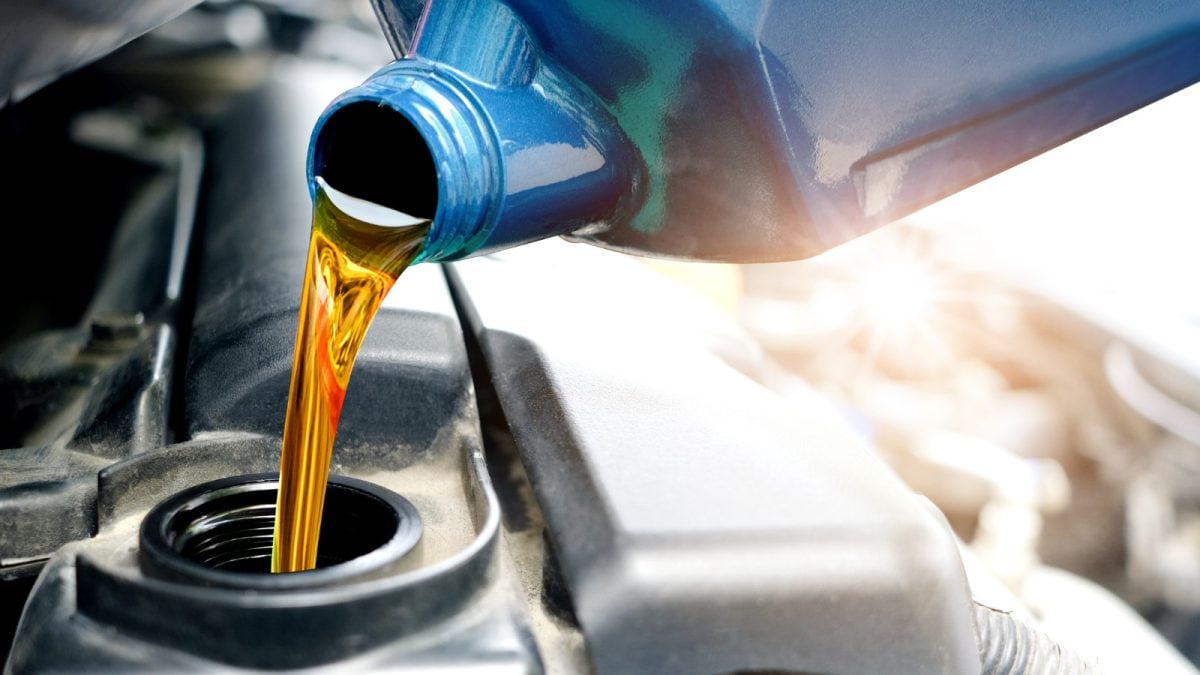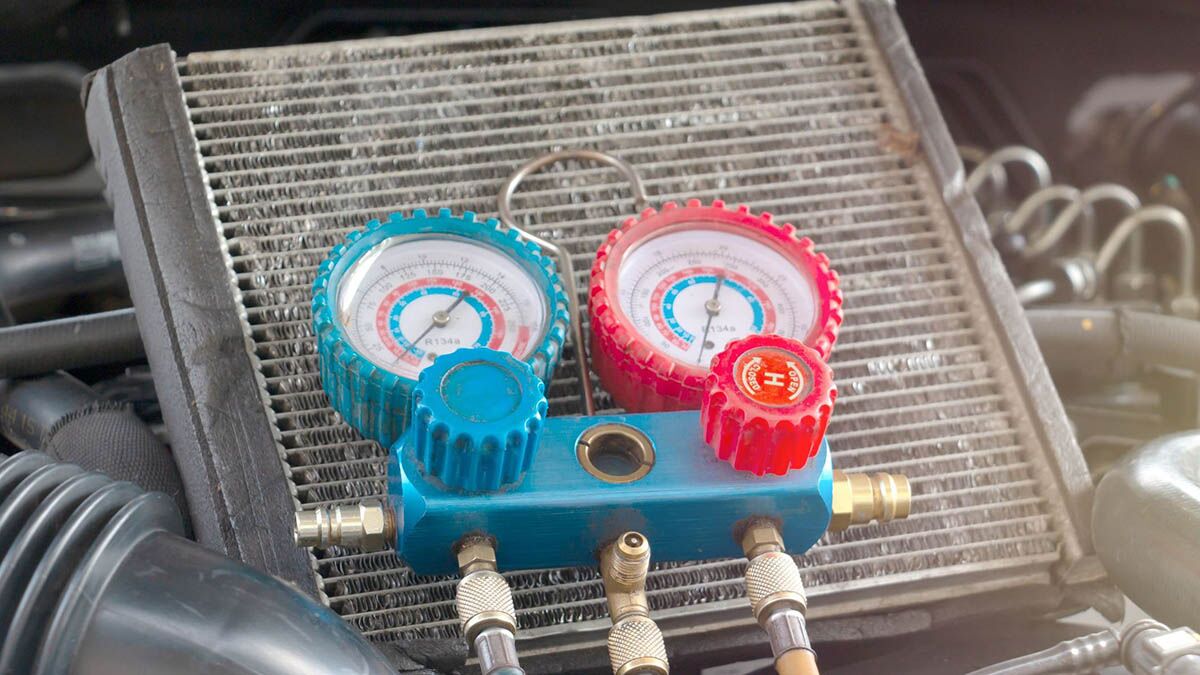How Often Should You Change Your Oil? Quick Tips:
- Modern vehicles using synthetic or semi-synthetic oils can typically go 7,500 to 10,000 miles or more between oil changes, far surpassing the outdated 3,000-mile guideline.
- Synthetic oils offer better protection and last longer than conventional oils, though they cost more upfront.
- Regular oil changes and keeping maintenance records are essential for engine health and boosting resale value.
Some car owners say oil changes are similar to going to the dentist for a biannual cleaning. They say it’s an inconvenient task but necessary maintenance for longevity and preventing future problems.
Once upon a time, local service stations and oil change franchisees recommended changing your car’s oil and replacing filters every 3,000 miles. However, that rule of thumb is now largely outdated. Most modern vehicles use synthetic blends or fully synthetic oil that often lasts more than three times longer than conventional motor oil.
Keep reading to learn how often you need to change the oil in your car, the type of oil to use, the cost, and other tips about changing engine oil.
- How Often Should You Change Your Oil?
- Why Is Changing Oil Important?
- Types of Motor Oils for Your Vehicle
- Oil Change Costs
- What’s Involved in an Oil Change?
- DIY Oil Change Tips
- Keep Maintenance Records
- Bottom Line on Oil Changes
How Often Should You Change Your Oil?
Engines with newer technology often use synthetic oil and can travel 10,000 miles or more between oil changes. While more exacting standards in engine-building tech are now in play, the quality of synthetic oils has also improved.
Your owner’s manual has the manufacturer’s suggested oil change schedule. Still, there are also general recommendations regarding oil change frequency based on many factors, including your driving habits and location.
Drivers in the United States travel about 14,500 miles annually. So, if you’re the average driver logging about 1,200 miles monthly in a newer car using synthetic oil, you should probably get an oil change every eight or nine months. More frequent oil changes might be needed if you do a lot of highway or long-distance driving, or if you drive in sandy or dusty surroundings like the deserts of Nevada or Arizona.
A plug-in hybrid vehicle might require less frequent oil changes because of less frequent engine use. Fully electric vehicles (EVs) use no engine oil at all because they don’t have a combustion engine. Thus, EVs never need an oil change, just like they never need to fill up with gasoline.
Oil-Life Monitoring Systems
Many of today’s new cars have a helpful bit of technology called an oil-life monitoring system, which helps keep your oil changes up to date. Such a system calculates oil change intervals based on the vehicle’s use, remaining oil, operating conditions, and time since the previous oil change so drivers know when it’s due. Complex algorithms consider those factors to accurately determine when an oil change is needed, which often extends beyond the traditional mileage-based service interval.
Why Is Changing Oil Important?
Engines have made significant leaps in technology, but how we lubricate them has remained constant, and the need to keep that oil clean helps ensure a long engine life. That involves periodically draining the used oil, replacing the oil filter, and refilling the engine with new lubricant.
High-compression engines, auto start/stop technology, turbocharging, and other developments increase the demands on oil and lubricant technology.
Types of Motor Oil for Your Vehicle
Several types of engine oils are on the market. Oil is widely available at your car dealership, service center, auto parts shop, or big box stores. Motor oil varieties are tailor-made for the vehicle type and your driving habits.
Conventional oils are derived directly from crude oil. Newer synthetic oils blend traditional oil with lubricants and other additives that enhance its performance but come at a higher price, on average, than regular oils.
- Traditional engine oil historically was a safe choice for cars, but it requires replacement at much more frequent intervals. The same interval applies to the filters that trap impurities from the oil flow. You should change conventional oil and filters after approximately 5,000-7,500 miles of service.
- Semi-synthetic engine oil combines synthetic and traditional oil. Blends of conventional and synthetic oil are good choices for vehicles that operate under heavier loads and extended driving sessions. Semi-synthetics last longer than conventional petroleum-based oil, and the blends safely provide proper engine lubrication to around 8,000 miles.
- Synthetic oil is the perfect choice for today’s high-tech engines, whether high-performance or high-efficiency. Synthetics offer better performance from a viscosity standpoint (the ability to flow through engine parts) and increased protection from foreign deposits. It’s the perfect choice to protect your investment, whether a pickup truck or a plug-in hybrid. Typically, synthetic oil is good for 10,000 miles or more.
Should I Use Synthetic Oil?
Any car with a gasoline engine can benefit from using synthetic oil. Most modern engines are designed for synthetic oil. Synthetic engine oil and blends cost more than conventional oil. Still, drivers may save money over time by using a synthetic variety because it lasts longer, requiring fewer oil changes.
Generally, you should use oils certified by the American Petroleum Institute. Look for the API trademark symbol when purchasing oil. To decide which type of lubricant is suitable for your vehicle’s engine, it’s best to consult your owner’s manual. Inside it, you will find the type, viscosity grade, and guidance on how often oil changes are needed.
How Heat Affects Motor Oil in Your Car
Regional temperature fluctuations have always been a moving target. And they can affect the duration of your engine oil’s effectiveness. Your local auto shop will help you select the proper grade of oil for your vehicle to be sure it gets what it needs. Where you live and how you use your vehicle are just as important as how much you drive.
Higher outside temperatures can cause oil to break down sooner than expected. At the same time, wind-blown sand and grit can get into the engine, especially under extreme conditions.
RELATED ARTICLE: Types of Gasoline Explained: Learn the Differences
Oil Change Cost Factors
A typical conventional oil change and filter replacement will run in the neighborhood of $100, depending on which neighborhood you live in, of course. You can use our Car Maintenance Pricing tool to find the estimated cost of an oil change for your vehicle in your area. Using synthetic oils may increase those prices by $20, give or take.
Doing it yourself will save considerable money when you need to get an oil change. Depending on your location, five quarts of conventional oil and an oil filter will cost around $35. The same amount of synthetic oil and a new filter will cost about $45 plus tax.
Check local auto parts suppliers and service centers for specials.
MORE: Does My Car Need a New Fuel Filter?
What’s Involved in an Oil Change?
Your local dealership service department knows your vehicle best. Its technicians have undergone factory training to properly maintain and repair your car, truck, or SUV. While traditional oil is still widely used and likely was in your vehicle when it came from the factory, your dealership service department stocks a range of brands and oil types. Your service advisor will suggest the oil that will suit your vehicle’s needs.
Many vendors, such as a dealership express lane or quick-lube shop, advertise “in and out in 30 minutes or less” for oil changes. Our experience tells us to set aside an hour for the service, including waiting time.
If you plan to perform an oil change yourself, consult the owner’s manual for oil type and amount, oil filter size, and the location of the oil pan and drain plug.
MORE: When Do I Need to Change My Transmission Fluid?
Do-It-Yourself Oil Change Tips
- Park on a flat, level surface. Apply your vehicle’s parking brake and turn the engine off. If needed, raise the front end of your car with a pair of jack stands. Open your hood and remove the oil dipstick to allow complete oil drainage from the crankcase.
- Wear safety glasses. Once your vehicle is secure on the jack stands, crawl under and move to the engine’s oil pan. Consult the manual for the location.
- Locate the drain plug at the bottom of the plan.
- Position a catch pan under the drain plug. Make sure it is large enough to capture all the oil draining from your engine. Check the manual for oil pan capacity.
- Using the proper socket wrench or box-end wrench, loosen the drain plug over the catch pan to flow the draining oil into the pan. CAUTION: The oil may still be hot!
- Inspect the drain plug for any stripping of the threads or the bolt itself. If it is okay, replace it once the oil has completely stopped draining. If in need of a replacement, hopefully, you will have already acquired it. Tighten the plug with the wrench used to remove it.
- Locate your oil filter. Have your oil catch pan ready in case of any residual oil remaining. Loosen the oil filter with an oil filter wrench. Check the gasket to make sure it was removed with the filter. Replace with a new filter after applying a coat of oil to the new filter’s gasket.
- Remove the oil filler cap and pour the proper amount of fresh synthetic or conventional oil back into the engine, using a funnel to avoid spillage. Replace the cap.
- Start the engine, letting it idle for at least a minute. Check underneath for any leakage. If all is good, turn off the engine, then lower the vehicle by using the jack and removing the jack stands.
- Check the oil level using the dipstick once on solid, level ground. Use the oil dipstick as a gauge. Add additional oil if necessary.
- Properly dispose of old oil by taking it to your local dealership service department or auto service center to be recycled.
RELATED ARTICLE: How To Change a Tire
Keep Maintenance Records
In most cases, you will no longer have to change your car’s oil every 3,000 miles or so — those days are in the past. However, oil changes remain a critical part of vehicle preventative maintenance that helps ensure long engine life.
Whether you do it yourself or use a professional to change the oil, it’s essential to stay on schedule and keep maintenance records. Consistent routine maintenance can enhance the resale value of your vehicle in the long term. Any potential buyer will appreciate your diligence in taking care of the car.
In the short term, keeping the oil fresh and clean will ensure that your vehicle is ready to go when you are.
Bottom Line on Oil Changes
While the traditional advice of changing you car’s oil every 3,000 miles is now outdated,, regular oil changes remain essential for engine longevity and performance. Advances in engine technology and the widespread use of synthetic oils mean most modern vehicles can safely travel 7,500 to 10,000 miles — or even longer — between oil changes. Follow the manufacturer’s guidance on which lubricant product to use on your vehicle and the service intervals. Use the vehicle’s oil-life monitoring system, if equipped, to stay on schedule. Staying diligent with routine oil changes and keeping accurate maintenance records prevents costly repairs and also enhances your car’s reliability and resale value.
Editor’s Note: This article has been updated since its initial publication. Mark Elias contributed to the report.









